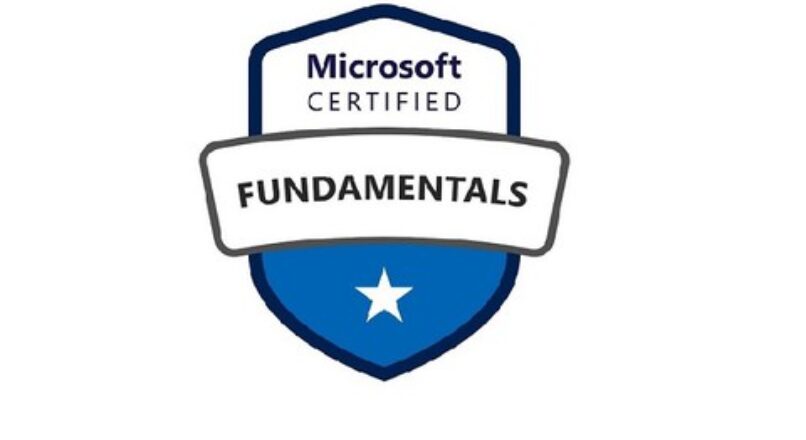
AZ-900 Mock Test

Prezo: $19.99
Exam AZ-900: Microsoft Azure Fundamentals checks and validates your fundamental knowledge of cloud services and how Microsoft Azure provides the cloud services, irrespective of any specific role.
Latest changes are updated. Kaj, I’ll keep on adding more questions.
vi lernos la paŝojn, kiujn tre produktivaj homoj uzas por resti koncentrita kaj fari pli:
-
Priskribu nubajn konceptojn (20-25%)
-
Priskribu kernajn Azure-servojn (15-20%)
-
Priskribu kernsolvojn kaj administrajn ilojn sur Azure (10-15%)
-
Priskribu ĝeneralajn sekurecojn kaj retajn sekurecajn funkciojn (10-15%)
-
Priskribu identecon, regado, privateco, kaj plenumaj trajtoj (20-25%)
-
Priskribu Azure-kostoadministradon kaj Servonivelajn Interkonsentojn (10-15%)
Priskribu Nubajn Konceptojn (20-25%)
Identigu la avantaĝojn kaj konsiderojn de uzado de nubaj servoj
• identify the benefits of cloud computing, such as High Availability, Skalebleco, Elasticity, Agility, and Disaster Recovery
• identify the differences between Capital Expenditure (CapEx) kaj Operacia Elspezo (OpEx)
• describe the consumption-based model
Priskribu la diferencojn inter kategorioj de nubaj servoj
• describe the shared responsibility model
• describe Infrastructure-as-a-Service (IaaS),
priskribi Platform-as-a-Service (PaaS)
• describe serverless computing
• describe Software-as-a-Service (SaaS)
• identify a service type based on a use case
Priskribu la diferencojn inter specoj de nuba komputado
• define cloud computing
• describe Public cloud
• describe Private cloud
• describe Hybrid cloud
• compare and contrast the three types of cloud computing
Priskribu Core Azure Services (15-20%)
Priskribu la kernajn Azure-arkitekturajn komponentojn
• describe the benefits and usage of Regions and Region Pairs
• describe the benefits and usage of Availability Zones
• describe the benefits and usage of Resource Groups
• describe the benefits and usage of Subscriptions
• describe the benefits and usage of Management Groups
• describe the benefits and usage of Azure Resource Manager
• explain Azure resources
Priskribu kernajn rimedojn disponeblajn en Azure
• describe the benefits and usage of Virtual Machines, Azure App Services, Lazuro
Container Instances (ACI), Azure Kubernetes Service (AKS), and Windows Virtual Desktop
• describe the benefits and usage of Virtual Networks, VPN-Enirejo, Virtual Network peering, and ExpressRoute
• describe the benefits and usage of Container (Blob) Stokado, Diska Stokado, Dosiera Stokado, and storage tiers
• describe the benefits and usage of Cosmos DB, Azure SQL-Datumbazo, Azure Database for
MySQL, Azure Database por PostgreSQL, and SQL Managed Instance
• describe the benefits and usage of Azure Marketplace
Priskribu kernsolvojn kaj administrajn ilojn sur Azure (10-15%)
Priskribu kernajn solvojn disponeblajn en Azure
• describe the benefits and usage of Internet of Things (Arduino-Programado kaj Aparataro Fundamentoj kun Hackster) Hub, IoT Central, and Azure Sphere
• describe the benefits and usage of Azure Synapse Analytics, HDInsight, kaj Azure Databricks
• describe the benefits and usage of Azure Machine Learning, Cognitive Services and Azure Bot Service
• describe the benefits and usage of serverless computing solutions that include Azure Functions and Logic Apps
• describe the benefits and usage of Azure DevOps, Konu la Vivciklon de Programaro, GitHub Actions, and Azure DevTest Labs
Priskribu Azure-administrajn ilojn
• describe the functionality and usage of the Azure Portal, Azure PowerShell, Azure CLI, Cloud Shell, and Azure Mobile App
• describe the functionality and usage of Azure Advisor
• describe the functionality and usage of Azure Resource Manager (BRAKO) ŝablonoj
• describe the functionality and usage of Azure Monitor
• describe the functionality and usage of Azure Service Health
Priskribu ĝeneralajn sekurecojn kaj retajn sekurecajn funkciojn (10-15%)
Priskribu Azure-sekurecaj funkcioj
• describe basic features of Azure Security Center, including policy compliance, security alerts, secure score, and resource hygiene
• describe the functionality and usage of Key Vault
• describe the functionality and usage of Azure Sentinel
• describe the functionality and usage of Azure Dedicated Hosts
Priskribu Azure retan sekurecon
• describe the concept of defense in depth
• describe the functionality and usage of Network Security Groups (NSG)
• describe the functionality and usage of Azure Firewall
• describe the functionality and usage of Azure DDoS protection
Priskribu identecon, regado, privateco, kaj plenumaj trajtoj (2025%)
Priskribu kernajn Azure-identecservojn
• explain the difference between authentication and authorization
• define Azure Active Directory
• describe the functionality and usage of Azure Active Directory
describe the functionality and usage of Conditional Access, Plurfaktora Aŭtentikigo (MFA), and Single Sign-On (SSO)
Priskribu Azure-regado-funkciojn
• describe the functionality and usage of Role-Based Access Control (RBAC)
• describe the functionality and usage of resource locks
• describe the functionality and usage of tags
• describe the functionality and usage of Azure Policy
• describe the functionality and usage of Azure Blueprints
• describe the Cloud Adoption Framework for Azure
Priskribu privatecon kaj plenumajn rimedojn
• describe the Microsoft core tenets of Security, Privateco, and Compliance
• describe the purpose of the Microsoft Privacy Statement, Online Services Terms (OST) and Data Protection Amendment (DPA)
• describe the purpose of the Trust Center
• describe the purpose of the Azure compliance documentation
• describe the purpose of Azure Sovereign Regions (Azure Government cloud services and Azure China cloud services)
Priskribu Azure-kostoadministradon kaj Servonivelajn Interkonsentojn (1015%)
Priskribu metodojn por plani kaj administri kostojn
• identify factors that can affect costs (resource types, servoj, lokoj, trafiko de eniro kaj eliro)
• identify factors that can reduce costs (reserved instances, reserved capacity, hybrid use benefit, spot pricing)
• describe the functionality and usage of the Pricing calculator and the Total Cost of Ownership (TCO) kalkulilo
• describe the functionality and usage of Azure Cost Management
Priskribu Azure Servonivelaj Interkonsentoj (TCO-Kalkulilo) kaj servaj vivocikloj
• describe the purpose of an Azure Service Level Agreement (SLA)
• identify actions that can impact an SLA (t.e. Availability Zones)
• describe the service lifecycle in Azure (Public Preview and General Availability)





Lasu respondon
Vi devas Ensaluti aŭ registri por aldoni novan komenton .